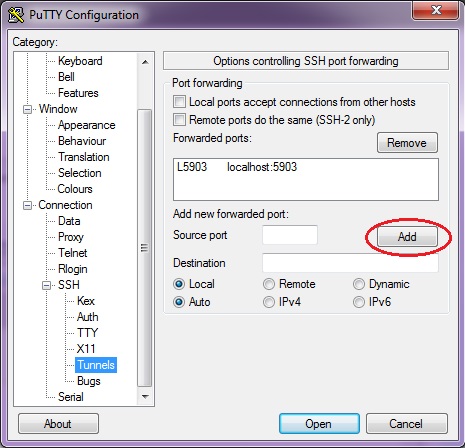

- LUBUNTU VNC THROUGH SSH INSTALL
- LUBUNTU VNC THROUGH SSH MANUAL
- LUBUNTU VNC THROUGH SSH SOFTWARE
- LUBUNTU VNC THROUGH SSH TRIAL
- LUBUNTU VNC THROUGH SSH WINDOWS

Type the IP address of your Raspberry Pi in the “Host Name (or IP address). You will be presented with a login / connection set-up screen. Just copy the file to a convenient location on your PC.ĭouble click on the putty.exe file to start the program. You need the putty.exe file. PuTTY comes as a single putty.exe file and does not require an installation.
LUBUNTU VNC THROUGH SSH WINDOWS
Look for the section called Binaries and the subsection For Windows on Intel x86. The latest version can be downloaded from. PuTTY is one of the most popular such client program.
LUBUNTU VNC THROUGH SSH INSTALL
On Windows you need to install an SSH client in order to be able to access the Raspberry Pi terminal remotely. Write down this IP address, as you will need it later!Īlternatively, if you have access to your router configuration page, your Raspberry Pi’s IP address will be there as well, under the list of devices connected to your network. If you are connected to your router via a USB Wi-Fi dongle, the connection will be listed as something like “wlan0”. This connection is listed as “eth0” and the IP address of the Pi is 192.168.1.70. In the image above, my Raspberry Pi is connected to my router via an ethernet cable. What you are looking for is the address listed next to “inet addr:”. In the terminal type ifconfig and press enter. Next we need to identify the IP address of your Raspberry Pi. It will start on boot, so you only need to go through this process once. You will get back to the Terminal window and should see something like this:ĭone! You have an SSH service (daemon) running on your Raspberry Pi. Hit the Enter key to go back to the Main Menu of raspi-config, navigate to the option and hit the Enter key again. Select and hit Enter. If all is well, you should see the confirmation below. You will get a prompt to Enable / Disable the SSH Server on the Raspberry Pi. Navigate to item 8 “Advanced Options” using the arrow key and hit Enter. Once you hit the Enter, the following screen should appear: To launch it open the Raspberry Pi Terminal and type: sudo raspi-config
LUBUNTU VNC THROUGH SSH SOFTWARE
Remote command line access to the Raspberry Pi via SSH can be enable via the Raspberyy Pi Software Configuration Tool. Remote access to the Raspberry Pi Terminal Enable SSH on the Raspberry Pi The computer from where you will access the Raspberry Pi.
LUBUNTU VNC THROUGH SSH MANUAL
Configuring the Wi-Fi access requires some manual steps and will be covered in a separate post.
LUBUNTU VNC THROUGH SSH TRIAL
After some trial and error, I found that for access to the Raspberry Pi graphical desktop and applications, VNC works better than X forwarding over SSH. SSH works fine for accessing the Raspberry Pi terminal, but occasionally you need to acess the graphic desktop as well. “X” is a window systems used in Unix and also Linux systems, like the Raspbian OS on the Raspberry Pi. You could also transfer files and even access some graphical applications over SSH using what is called as “X forwarding”. To access the Raspberry Pi terminal and issue text commands remotely, we will be using the SSH (Secure Shell) protocol. I also added some additional info, based on my mistakes and some forum posts I read, so keep reading… Be sure to bookmark the site and check for updates. This is an open source project and more information is being added on a regular basis. My starting point was the official Raspberry Pi documentation page. The steps below will work for Raspberry Pi models B, B+ and 2. I want to put my Raspberry Pi 2 on a small mobile robot platform, so I can’t have it drag a mouse, keyboard and monitor around. In some posts this is referred to as running your Raspberry Pi “headless”. I do not have a Mac, but the steps should be very simillar. This post will cover the steps necessary to set-up remote access to the Raspberry Pi terminal and graphical desktop environment from a Windows, or Linux PC.


 0 kommentar(er)
0 kommentar(er)
